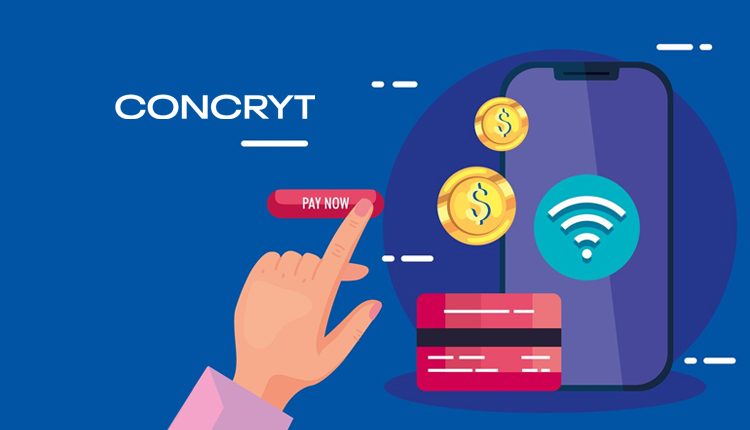By Azimkhon Askarov, Co-Partner of CONCRYT
It’s long been a given that merchants must accept Visa and Mastercard to capture a larger share of consumer transactions. But as Pay-by-Bank surges in popularity, could these global giants be on the verge of losing their global dominance in payments? Azimkhon Askarov, Co-Partner of CONCRYT, examines the possibility of Pay-by-Bank transactions claiming the transaction top spot.
Pay-by-bank (including A2A transactions) transactions allow customers to make online payments directly from their bank accounts, negating the need for card intermediaries (e.g. Visa or Mastercard). Customers can simply authorise payments by using their online banking credentials to transfer funds directly from their account to a merchant’s account which allows the merchants to stay on the better fee level and receive the settlements instantly.
The benefits of Pay-by-Bank and A2A payments vs card payments for merchants are certainly clear.
Aside from lower operational expenses, they benefit from rapid funds settlement, with funds typically landing in the merchant’s account almost instantly. This is especially where faster payments schemes are in operation, for instance the Faster Payments Scheme in the UK, or SEPA Instant Scheme in the EU.
Furthermore, Pay-by-Bank simplifies the payment process, which lowers cart abandonment rates, and as an accessible and preferred payment method for a wide range of customers, accepting Pay-by-Bank can attract and help retain customers, who are attracted by the promise of a friction-free payment experience.
Read More: GlobalFintechSeries Interview with John Sun, CEO at Spring Labs
Pros and cons for consumers
Research bears out how important this is. One study found that speed and convenience are among the chief expectations of consumers, with more than three quarters (77%) now expecting payments to be instantaneous and more than half (58%) expecting online payments to be completed with one click.
In this regard, Pay-by-Bank also has consumer-facing benefits, and is increasingly favoured over card payments due to enhanced security and streamlined user experience. Transactions are authorised directly through users’ banks, reducing fraud risk as unlike card payments, which require the entry of sensitive card details that can be susceptible to fraud, Pay-by-Bank transactions are authorised directly through the user’s bank.
But there are downsides. As with all financial transactions, there is a fraud risk. With stolen account information, criminals can easily take advantage of the vulnerabilities of Pay-by-Bank and A2A services and rails, and lawmakers are calling for better protection for the account holders.
That said, since these payments don’t involve any intermediaries, there is less opportunity for fraudsters to intercept or steal funds. Additionally, because they are typically initiated through a bank’s online banking platform, security measures such as two-factor authentication help to effectively protect accounts.
It’s perhaps unsurprising then, that this method is being embraced, to varying extents, the world over.
A growing trend
A2A payments are already the leading choice for online transactions in developed markets such as Norway, Finland, Sweden and the Netherlands, and according to Worldpay, they are more likely to be popular in emerging markets such as Malaysia, Nigeria and Thailand – not to mention India again, where government support has encouraged rapid adoption. In short, A2A and Pay-by-Bank are among the leading payment options in many regions.
According to the 2024 Global Payments report, A2A payments are also growing fast in markets like Brazil and India on the back of PIX and UPI schemes respectively, with global A2A transaction values forecast to rise at 14% CAGR through 2027, gaining 1% global share during that time.
But the real driving force behind Pay-by-Bank success is the implementation of Open Banking, which effectively gives these payments the boost they need to compete with card payments.
At one time, Pay-by-Bank payments would have struggled because bank transfers required payers to log into their bank accounts and manually enter account details to make a payment, meaning they would still fall a little short of today’s expectations of convenience. That’s where Open Banking comes in. It removes this friction by making entering account details an automatic process.
South Korea, Australia and India have developed their Open Banking systems, whilst Hong Kong, Japan, and further parts of Asia are currently preparing for Open Banking. In April this year, Canada, a country which launched Open Banking in 2019 but has lagged in user adoption, announced new measures that could allow consumers’ financial data to be shared, encouraging more uptake.
As for the US, where regulators are considering a decision on Open Banking, Pay-by-Bank and A2A payments face an uphill battle. Card payments still account for more than two-thirds of point of sale transaction value and half of e-commerce spendings, according to the 2023 FIS/Worldpay Global Payments Report. But with the launch of the Federal Reserve’s FedNow instant payments service, joining the Real Time Payments network of The Clearing House, and other factors, FIS forecasts A2A payments specifically will see a compound annual growth rate of 14% through to 2026.
And as 32% of North Americans are already using Direct Debit, and bank transfer as their primary payment method online, it’s not unreasonable to expect this trend to continue to grow in popularity in the coming years.
There’s no doubt Pay-by-Bank is changing the way financial institutions operate and impacting the broader payments landscape in many ways, from increasing competition among payment providers and financial institutions to creating opportunities for innovation in the payments space.
Visa and Mastercard may be on top of the payments pile for now, but as global adoption of Pay-by-Bank increases, we could soon see their dominance challenged.
Read More : Future-proofing payments in the contactless era with SoftPoS
[To share your insights with us, please write to psen@itechseries.com ]
